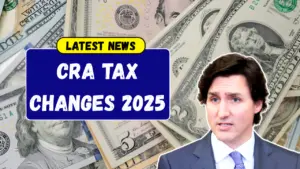Financial assistance programs have become increasingly essential as the cost of living continues to rise across the United Kingdom. For many households, even small payments can make a big difference in managing day-to-day expenses like energy bills, groceries, and basic necessities. One initiative gaining attention is the £200 support payment, set to be distributed in 2025. Administered through the Household Support Fund (HSF), this payment is targeted at those facing financial hardship, offering timely relief during challenging times.
If you’re wondering whether you’re eligible or how to apply, this guide will help you navigate the process and make the most of this opportunity.
What Is the £200 Support Payment?
The £200 support payment is a one-time financial aid program designed to provide relief to low-income households grappling with the rising cost of living. Funded by the UK Government, the initiative is part of the broader Household Support Fund, which empowers local councils to allocate financial support based on the unique needs of their communities.
The payment aims to cover essential expenses, such as:
- Energy Bills: Helping households manage rising heating and electricity costs.
- Food: Offering support to purchase groceries and other necessities.
- Daily Living Costs: Providing relief for transport, clothing, or unexpected expenses.
This payment stands out because it’s accessible to a wide range of households—not just those already receiving government benefits.
Why Is the £200 Payment Important?
The cost of living crisis has been a growing concern in the UK, with inflation impacting everything from energy prices to food costs. Vulnerable groups, such as low-income families, pensioners, and individuals on Universal Credit, are disproportionately affected by these economic pressures. The £200 support payment aims to bridge the financial gap and offer immediate relief.
Key Benefits of the Payment:
- Alleviating Financial Stress: Provides direct financial assistance to struggling households.
- Flexibility: Can be used for various essential expenses, ensuring recipients have the freedom to prioritize their needs.
- Wide Eligibility: Includes individuals who might not qualify for other benefits but are still facing financial hardship.
Who Is Eligible for the £200 Payment?
Eligibility for the £200 support payment is determined by local councils, as they are responsible for administering the funds. While exact criteria may vary depending on the region, here are some common factors that influence eligibility:
1. Residency
Applicants must reside within the jurisdiction of a council participating in the Household Support Fund program. Residency verification, such as utility bills or council tax statements, is usually required.
2. Financial Need
The payment prioritizes households experiencing financial hardship. This includes families struggling to afford food, utilities, or basic living expenses.
3. Income Thresholds
Local councils often set specific income limits to determine eligibility. For example:
- Single individuals earning less than £30,000 per year
- Families with a combined income below £40,000 annually
4. Benefit Recipients
Households receiving government benefits, such as Universal Credit, Housing Benefit, or Pension Credit, are likely to qualify. However, even those not receiving benefits may be considered based on their financial circumstances.
5. Special Circumstances
Certain groups may receive priority, including:
- Single parents
- Pensioners living on limited income
- Individuals with disabilities or chronic health conditions
It’s important to note that each household can usually receive only one £200 payment within a year.
How to Apply for the £200 Support Payment
Applying for the £200 support payment is a straightforward process, but it requires attention to detail to ensure eligibility and timely submission. Here’s a step-by-step guide:
Step 1: Identify Your Local Council
Visit the UK Government’s website and use the postcode tool to find your local authority. This will direct you to the council responsible for administering the Household Support Fund in your area.
Step 2: Review Eligibility Requirements
Check your council’s specific guidelines for the £200 payment. Some councils may have unique criteria based on regional priorities.
Step 3: Prepare Necessary Documents
Gather the required documentation, which typically includes:
- Proof of residency (e.g., recent utility bills)
- Proof of income (e.g., payslips, benefit statements, or tax returns)
- National Insurance number for identification purposes
Step 4: Submit Your Application
Depending on your council, applications can be submitted online, by post, or in person. Ensure you complete the application form accurately and attach all supporting documents.
Step 5: Await Notification
Once submitted, your council will review the application and notify you of its status. Approved applicants will receive details on how and when to access the £200 payment.
How Is the Payment Distributed?
The method of distribution varies by council, offering flexibility to recipients. Common methods include:
- Bank Transfer: Funds are deposited directly into the recipient’s bank account.
- Supermarket Vouchers: Recipients may receive vouchers for groceries or other essentials.
- Cash Collection: In some cases, physical cash may be collected at designated centers.
Tips for a Successful Application
To maximize your chances of receiving the £200 support payment, follow these best practices:
- Apply Early: Submit your application promptly, as funds may be limited in some regions.
- Provide Accurate Information: Double-check all details and documents to avoid delays.
- Follow Up: If you don’t hear back within the expected timeframe, contact your council for updates.
- Keep Records: Save copies of your application and supporting documents for future reference.
Frequently Asked Questions
1. What Can the Payment Be Used For?
The payment is intended for essential expenses, including:
- Utility bills (electricity, gas, water)
- Food and groceries
- Transportation costs
- Clothing and household items
2. How Long Does It Take to Receive the Payment?
Processing times vary by council but typically range from two to four weeks after application approval.
3. Can I Apply If I Don’t Receive Government Benefits?
Yes! Eligibility is not limited to benefit recipients. If you’re experiencing financial hardship, you may still qualify.
4. What Happens If My Application Is Rejected?
If your application is declined, you can appeal the decision or inquire about alternative support programs offered by your council.
Conclusion
The £200 support payment coming in 2025 offers a valuable lifeline for UK households facing financial challenges. By understanding the eligibility criteria, application process, and distribution methods, you can take advantage of this initiative and secure the assistance you need. Whether it’s covering energy bills, purchasing groceries, or managing daily expenses, this payment provides much-needed relief during tough times.
If you think you might qualify for the £200 support payment, don’t delay start your application today and ensure you receive the support you deserve. Remember, staying informed and proactive is key to navigating financial assistance programs effectively.


